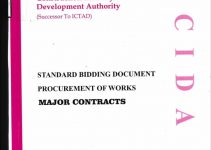It is one of the import terms used in construction industry at the day to day operations. Before start to analyze the benefits, types and drawbacks, one should understand the meaning of Sub-contracting. Sub-contracting is the performance of a contractual obligation where (a)The main contractor normally enters into a direct contract with sub contractors, (b)Subcontractor may let sublet their work to sub contractors and (c)The main contractor retain contractual responsibility for the sub contractors work. Attendance is normally provided by the main contractor, which may include the provision of water, power, use of scaffoldings, use of tower cranes, and removal of rubbish.
Types of Sub-contractors in Construction Industry

Type of Sub Contract
1. Domestic Sub-contractor
A Subcontractor is chosen and engaged directly by the main Contractor. Main contractor can appoint a sub-contractor for (a) Supply & installation Works or (b) Installation only. Conditions of contract require the main contractor to notify the engineer (consultant) of the extent of work to be subcontracted and the names and address of each subcontractor. The Engineer has the right to object to the employment of any sub-contractor.
2. Nominated Sub-contractor
A Sub-contractor is chosen by the Architect or Engineer to carry out specialist work. They are appointed on the expenditure of a Provisional Sum or Prime Cost Sum included in the Bill of quantities. The nominated sub-contractor enters into a contract with main contractor, but there may be a collateral warrantee between the nominated sub contractor and the client.
3. Named or listed Sub-contractor
In these circumstances the Architect may provide the main contractor with a list of at least three sub contractors to choose from for carrying out particular part of the project. The main contractor can add to the list, but in any event the Sub-contractor is a domestic subcontractor under the contract.
4. Work Package Sub-contractor
It is a type of domestic Sub-contractor but, might also imply responsibility for a specific section or package of the works, possibly including design work with little or no reliance on main contractor attendance to provide complete services.
5. Labor Supply Contractors
In this type, main contractor just hiring people from small labor supply contractors to carry out the works agreed by main contractor. It is considered after analyzing the drawbacks and risks of recruiting direct labor for the firm.
Advantages of Using Sub Contractors
• Main contracting firm can hire a Sub-contractor when he needs. This provides more flexibility on works. Some Sub-contractors can start work at short notice, even when large numbers of workers required.
• Main contractor can use a Sub-contractor for one-off jobs and jobs requiring specialist expertise or fast turnaround.
• It helps to main contractor to concern in core aspect of the project which aid to deliver the project at high quality. Main contractor need not worry about PAYE, insurance and contribution.
Disadvantages of Using Sub Contractors
• Sub-contractors may cost the main contractor more the expected. In other words, it makes a reduction on the initial profit margin of the main contractors.
• By relying on Sub-contractors, main contractor does not acquire skills or develop skills in house staff. This will hurt the main contracting firm for sustainable growth in the longer term.
• Permanent staff may recent sub contractors being paid more money for doing similar work to them. This leads to the threat of loss of intellectual capital of main contractor. Sub-contractors may not appreciate the main contractor’s culture and may lack the motivation and commitment of permanent staff.
• Main Contractor may not have direct control over the quality of Sub-contractors work.
It is recommended that before to appoint any kind of sub-contractors, a detail analysis on their industry back ground is necessary to avoid issues in future.
Written by Gowrinath © BasicCivilEngineering.com


